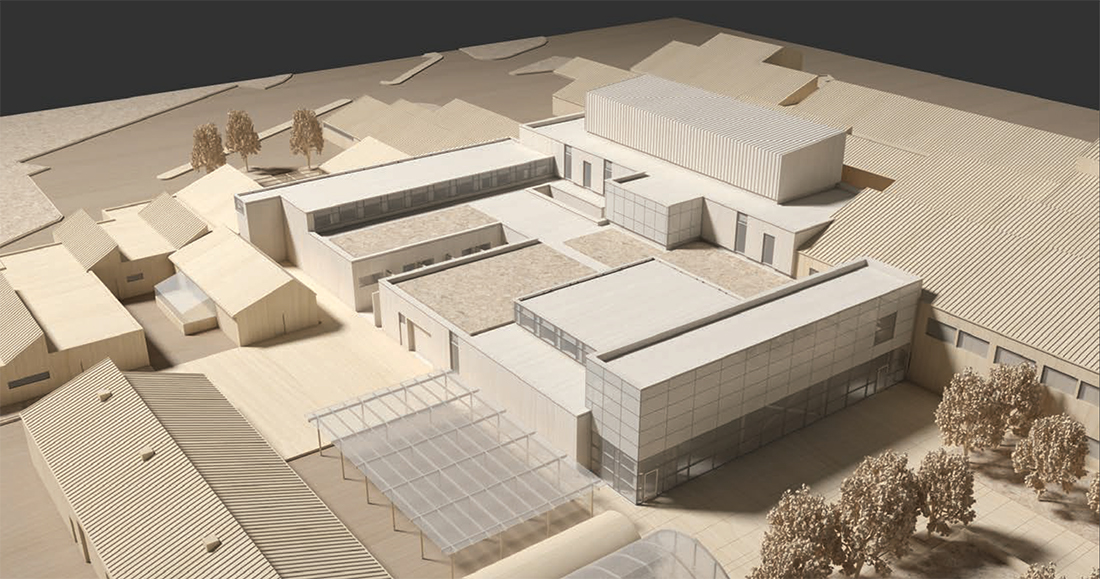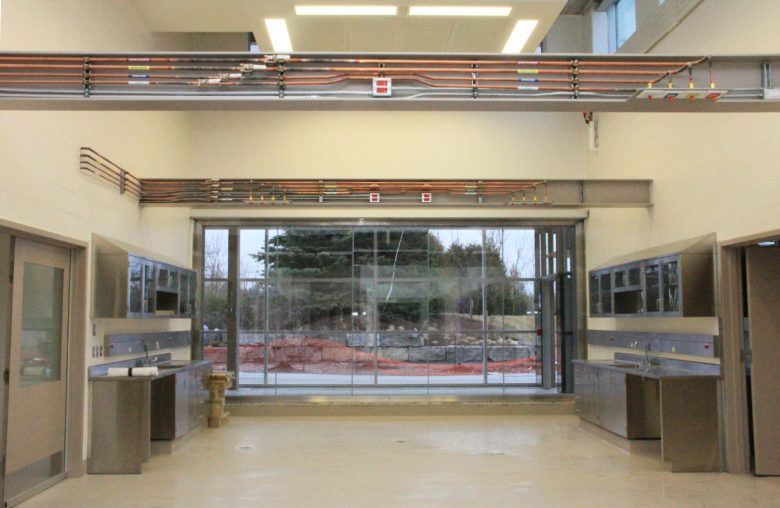
The Toronto Zoo constructs a new Wildlife Healthcare Facility
The Toronto Zoo is Canada’s premier zoo and home to over 5,000 animals, including invertebrates and fish, representing 460 species from a variety of geographical regions around the world. Encompassing approximately 710 acres, the Toronto Zoo is Canada’s largest zoo and is divided into seven zoogeographic regions, ranging from the Americas, to Africa, Australasia and Eurasia.
The campus includes numerous support facilities dedicated to animal care, operations, maintenance and veterinary services. With the existing veterinary facilities dating back to 1974, the Toronto Zoo recognized the need for redevelopment and expansion. The mandate for the new Wildlife Health Centre is to provide a state-of-the-art facility for veterinary services, that will further the Toronto Zoo’s commitment to wildlife health, nutrition, species survival research, conservation and education.
Planning for the new centre commenced in 2011 with Diamond Schmitt Architects, in collaboration with animal healthcare specialists Design Level, leading the team and preparing the architectural design for the new facility.
With a total gross area of 32,000 sq. ft., the new two-storey building would be located in the centre of the Toronto Zoo’s existing animal support complex and would be constructed in the footprint of the existing veterinary services building. Adjacent service buildings, including the existing Research, Animal Holding, Quarantine, and Conservation and Biology facilities, would connect to the new Wildlife Health Centre.
Design considerations
The functional program for the new centre would have to meet a variety of objectives, including: meeting the needs of the different animal species, taking into account diverse environmental requirements for the various habitats, providing a layout that promotes the effective delivery of ongoing healthcare services and meeting the requirements of the veterinary professionals who perform these services. Eric Lucassen, Project Architect at Diamond Schmitt, notes, “Working with the Toronto Zoo to create functional programming that supports animal healthcare, while meeting the unique habitat requirements for the various animals, involved a detailed planning process.”
The facility program for the Wildlife Health Centre is split over two floor levels and consists of animal treatment and surgical areas, diagnostic imaging, an intensive care unit, laboratories, animal holding areas, offices and support spaces, and a public viewing area. Animal holding areas are further divided into spaces for small and large animals, which require ceiling-high caging to provide safety for the staff.
Surgery and diagnostic imaging spaces are centrally located and are accessible via wider corridors to facilitate the easy transport of animals into these areas. A garage is located adjacent to the surgery area, and an electric hoist and hoist beam runs from the garage to the surgery area to help the transport of larger animals.
The majority of two-storey rooms have large clerestory (windows just below the ceiling) around the perimeter of the spaces. This architectural feature allows a significant amount of daylight to enter the interior of the building and creates the feeling of being in an open, natural environment. Laboratories and support spaces are located in close proximity with animal care areas to minimize travel distances for support services.
Mechanical considerations
Given the varying functionalities and diverse environmental requirements of the different spaces, a number of innovative applications of mechanical and electrical systems were incorporated in the building’s design. The holding area for fish and reptiles required that tropical temperatures be consistently maintained throughout the year, maintaining 100% relative humidity. Electric heat tracing cable, specifically modelled for the application by Tyco Thermal Controls, was installed in the slab to ensure that the temperature in the area would be maintained during winter months. While the electric heat tracing cable maintained a heat pad for reptiles, additional radiant floor heating was used to maintain the environment and create general floor comfort for animals.
Ventilation systems in animal care areas throughout the facility rely on a continuous 100% fresh air supply, with no return air, to ensure that contaminants and excrement are not circulated through the ventilation system. A heat recovery system was provided on the exhaust air system to increase energy efficiency. Animal surgery areas utilize a dedicated supply air system, which incorporate air change requirements and filtration comparable to the requirements for a human healthcare facility. By utilizing a separate, dedicated supply air system for surgery areas, energy efficiency is maintained in areas that require fewer air changes per hour.
Other energy efficient elements in the design included the use of low flow plumbing fixtures, roofing and landscaping features that promote heat island reduction for the site and the use of insulated glazing that provides an optimal balance between daylighting and heat transfer.


Electrical and lighting requirements
Unlike hospitals where patient care equipment is standard and there are prescribed standards for electrical circuiting requirements, animal care areas have speciality equipment items, and require multiple dedicated circuits and receptacles. Additionally, animal care areas were considered wet environments, due to the frequent washing that occurs after animals are returned to their habitats.
Ground fault circuit interrupter (GFCI) receptacles were used in these areas to maintain electrical safety. Lighting fixtures throughout the facility were selected to provide both illumination requirements for animal care and were vapour tight, to maintain infection control practices and protect luminaires from inadvertent spray during cleaning.
Occupancy sensors and multiple light switches were used throughout the facility to give users a wide range of automatic and manual lighting control, which allow lights to be turned off when there is enough daylight present through windows and clerestory.
To avoid interference with full height cages, architectural clerestories, and to minimize the likelihood of interaction with animals, overhead mechanical and electrical services were routed outside of animal care areas and confined to corridor spaces. This created several installation coordination issues that were resolved by the contractor, via the creation of detailed interference drawings during the construction phase of the project.
Nearing completion
The project was competitively tendered and awarded to Gillam Group Inc., with construction commencing in February 2015. The new building is in the final phases of construction and is scheduled to be complete during the first quarter of 2017.
Working on an animal healthcare facility designed to accommodate a variety of different species, with diverse requirements, proved to be a unique challenge.
While healthcare standards are readily available for hospital construction, there are minimal design and construction standards available for this type of animal care facility. Environmental standards established by the Canadian Council on Animal Care and general healthcare design experience contributed to the overall design.
Furthermore, involving the users throughout the project was critical in identifying the unique needs of various animal groups. Eric Lucassen notes, “Having the Toronto Zoo’s veterinary staff provide input into specific design requirements at every step of the project helped the design team develop innovative solutions to provide an enhanced animal care environment.” CCE
Philip Chow, P.Eng., P.E. is a senior project manager at H.H. Angus & Associates Ltd., Philip.Chow@hhangus.com
